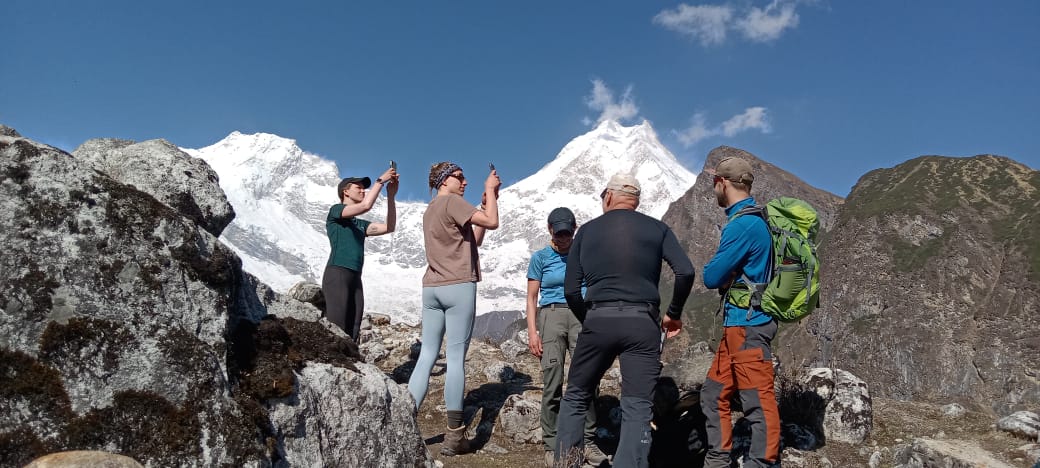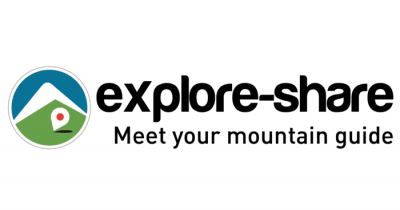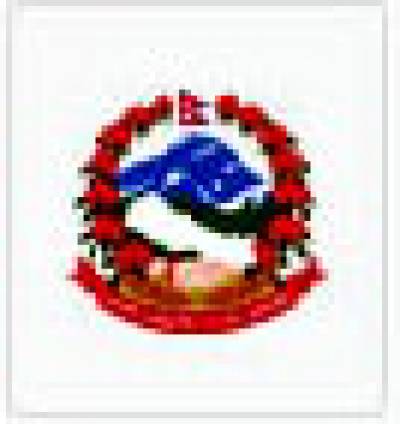MANASLU TSUM VALLEY TREK 14 DAYS
For those with limited time but an adventurous spirit, the Manaslu Tsum Valley Trek – 14 Days offers an immersive Himalayan experience through one of Nepal’s most remote and culturally rich regions. Carefully crafted by Sherpa Expedition, this rapid trek combines the sacred and secluded Tsum Valley with the dramatic alpine terrain of the Manaslu Circuit, including the thrilling crossing of the Larkya La Pass (5,106m).
The journey begins with a private jeep drive from Kathmandu to Dovan, a scenic route that gradually introduces you to the foothills of the Himalayas. From Dovan, the trek officially begins as you ascend through charming Gurung and Tibetan-influenced villages.
Your first few trekking days cover Jagat, Lokpa, and Chumling, the gateway to the mystical Tsum Valley. As you enter this culturally protected region, you’ll notice a stark change in architecture, language, and lifestyle. The Tsum Valley was closed to outsiders until 2008, and it still holds on to centuries-old Buddhist traditions.
Passing through Chhokangparo and Nile, you’ll experience heartwarming hospitality and witness a way of life untouched by modern development. The spiritual highlight of this section is a visit to Mu Gompa, the largest monastery in the valley, perched in a stunning location with panoramic views of the surrounding peaks.
After exploring the Tsum Valley, the trail reconnects with the main Manaslu Circuit as you trek back through Chumling, onward to Deng and Namrung. These villages sit beneath the shadows of Himalayan giants and offer glimpses of Manaslu (8,163m), the eighth-highest mountain in the world.
Reaching Samagaon, you’ll have time to acclimatize and explore the culturally significant Pungyen Gompa or hike to Manaslu Base Camp (optional). From here, the route climbs steadily toward Dharamsala (Larkya Phedi) in preparation for the most exhilarating part of the trek.
The crossing of Larkya La Pass is a demanding but rewarding challenge. Starting early in the morning, the ascent takes you through rugged glacial terrain with sweeping views of Himlung Himal, Cheo Himal, and Annapurna II. The descent from the pass leads to Bhimthang, a beautiful alpine valley surrounded by towering peaks.
From Bhimthang, you’ll descend through lush forests and traditional villages to Dharapani, where a private jeep will be waiting to bring you back to Kathmandu, marking the end of this unforgettable Himalayan adventure.
This 14-day rapid version of the Manaslu Tsum Valley Trek is ideal for experienced trekkers or those with good fitness looking to explore both the cultural heart of Tsum Valley and the high-altitude challenge of Larkya La in a condensed timeframe. With Sherpa Expedition’s expert guidance and logistics, you’ll experience the remote beauty of Nepal in a short yet fulfilling itinerary.
ITINERARY
Day 1 : Drive from Kathmandu to Dovan & Trek to Jagat (1,300m) – 9–11 Hours.
The adventure begins with a long but scenic drive from Kathmandu through the rolling hills and riverside settlements of central Nepal. Reaching Dovan, the road ends and your trek starts as you walk to Jagat, a small stone-paved village nestled in the hills. This gateway to the Manaslu Conservation Area marks the start of your wilderness journey.
Day 2 : Trek from Jagat to Lokpa (1,800m) – 5–6 Hours.
Leaving Jagat, the trail winds through dense subtropical forests, small Gurung villages, and terraced farmlands. After crossing the suspension bridge over the Budhi Gandaki River, you ascend toward Lokpa — the first entry point into the secluded Tsum Valley, offering the first taste of the region's isolation and spiritual charm.
Day 3 : Trek from Lokpa to Chumling (2,390m) – 5–6 Hours.
As you leave Lokpa, the landscape begins to change. The trail descends and ascends through rhododendron and pine forests with glimpses of snow-capped peaks in the distance. You'll reach Chumling, also known as Lower Tsum, a quiet village marked by stone houses, mani walls, and fluttering prayer flags — the essence of Himalayan serenity.
Day 4 : Trek from Chumling to Chokhangparo (3,010m) – 5–6 Hours.
Climbing deeper into the Tsum Valley, the route passes through fertile fields and across wooden bridges toward Upper Tsum. You reach Chokhangparo, a twin village perched on a wide plateau with stunning views of Ganesh Himal and the valley below. Here, Tibetan influence becomes stronger in both architecture and local culture.
Day 5 : Trek from Chokhangparo to Nile/Mu Gompa (3,361m) – 6–7 Hours.
Today’s trek leads toward the spiritual heart of Tsum. Passing traditional yak pasturelands and monastic settlements, you arrive at the Nile and continue to Mu Gompa, one of the highest and most sacred monasteries in the region. The rugged terrain and raw beauty surrounding this isolated gompa feel like stepping into another world.
Day 6 : Trek from Mu Gompa to Chokhangparo (3,010m) – 5–6 Hours.
After exploring the monastery and soaking in the silence of the high valley, you retrace your path back to Chokhangparo. This return offers a chance to appreciate the unique culture and environment of Tsum from a new perspective, perhaps visiting smaller monasteries or engaging with the warm-hearted locals.
Day 7 : Trek from Chokhangparo to Chumling (2,386m) – 6–7 Hours.
Descending from the upper valley, you pass again through farmlands, small gompas, and quiet pine forests. The tranquil village of Chumling welcomes you back for one last night in the Tsum Valley before rejoining the Manaslu Circuit.
Day 8 : Trek from Chumling to Deng (1,860m) – 6–7 Hours.
Leaving the mystical Tsum Valley behind, you descend and merge onto the main Manaslu trail. The route to Deng includes narrow ridges, waterfall crossings, and thick forest — a shift in landscape and atmosphere that reintroduces the raw power of the Budhi Gandaki gorge.
Day 9 : Trek from Deng to Namrung (2,630m) – 5–6 Hours.
The trail climbs through dense woodlands and across riverbanks to reach Namrung, a culturally rich village known for its stone houses and ornate Buddhist shrines. As you ascend, the air gets cooler and the views of the Manaslu range start to unfold, offering glimpses of the towering Himalayan peaks ahead.
Day 10 : Trek from Namrung to Samagaon (3,530m) – 6–7 Hours.
This day offers one of the most scenic sections of the trek. Passing through Sho and Lho villages with stunning views of Mt. Manaslu, you reach the expansive village of Samagaon. Nestled in a broad valley, this culturally Tibetan village is home to the historic Pungyen Gompa and offers a peaceful resting place before climbing higher.
Day 11 : Trek from Samagaon to Dharamsala (4,460m) – 4–5 Hours.
The journey continues through alpine landscapes, crossing yak pastures and glacier-fed rivers. Dharamsala (also known as Larkya Phedi) sits at the foot of the Larkya La Pass and serves as a staging point for the highest and most challenging crossing of the trek. Today’s shorter trek allows time for acclimatization and rest.
Day 12 : Cross Larkya La Pass (5,106m) and Trek to Bimtang (3,720m) – 8–9 Hours.
This is the toughest and most rewarding day of the trek. Starting early, you ascend gradually over a rocky trail to the windswept Larkya La Pass. From the top, the panorama includes Himlung Himal, Cheo Himal, and Annapurna II. The descent to Bimtang is long and steep but incredibly scenic, with glacial lakes, moraine valleys, and alpine meadows welcoming you into the next valley.
Day 13 : Trek from Bimtang to Dharapani (1,900m) – 6–7 Hours.
You’ll descend through lush rhododendron and oak forests, passing riverside villages and terraced farmlands. By the time you reach Dharapani, you’ll be back in warmer climates, walking through lower-altitude settlements that feel almost tropical in contrast to the high passes.
Day 14 : Drive from Dharapani to Kathmandu – 8–9 Hours
After breakfast, drive through the scenic Marsyangdi River Valley, passing waterfalls, cliffs, and villages before joining the Prithvi Highway. The return to Kathmandu marks the end of a challenging but deeply rewarding journey through some of Nepal’s most sacred and remote landscapes.
SERVICES
Costs Include In Your Package:
- Transportation from Kathmandu to Dovan by Private Jeep & Dharapani to Besisahar By Sharing local Jeep & Besisahar to Kathmandu By Local bus
- All standard meals (lunch, dinners & breakfast) during the trek.
- Best possible teahouses, lodge accommodation (generally twin share rooms)- during the trek
- Government licensed holder English speaking trek leader (10 or more trekkers an assistant guide) and porter to help carry your luggage.
- Strong, helpful Sherpa porters with proper safety equipment and walking equipment, his salary, food, accommodation, and insurance (one porter for two people).
- Guides and porters provided by Sherpa Trekking & Expeditions, including their meals, insurance, salary, lodging, transportation, and other necessary equipment
- Manaslu & Tsum Valley special permit to travel within the Conservation Area and Annapurna Conservation Area Permit (ACAP) fees
- Use of sleeping bag, down jacket, duffel bag and walking poles (if you don’t have your own, to be returned after trip completed).
- All government, local taxes, and official expenses
- Assistance in arranging rescue operation in case of complicated health conditions such as altitude sickness (funded by travel insurance)
- Souvenir - Sherpa Trekking & Expeditions t-shirt
- Sherpa Expedition and Trekking’s certificate of appreciation & completion after the successful trek
- Oxygen meter to check your pulse and oxygen saturation and heart rate twice daily (Very useful to check Altitude Mountain Sickness(AMS) symptoms) which will ensure your health during the trek.
- Assistant guide for groups of 8 or more people.
Cost Excludes
- International Airfare: Flights to and from Nepal are not included.
- Meals & Accommodation in Kathmandu: Lunch, dinner, and hotel accommodation in Kathmandu are at your own expense.
- Nepal Entry Visa Fee: Easily obtainable upon arrival at Tribhuvan International Airport (Kathmandu). Visa fees are:
- $30 USD for 15 days
- $50 USD for 30 days
- $125 USD for 90 days
- Additional Accommodation: Extra nights in Kathmandu due to early arrival, late departure, or early return from the trek for any reason.
- Beverages & Extra Food on the Trek: Alcoholic and non-alcoholic drinks, soup, tea, coffee, hot chocolate, cocoa, bottled water, and any food or drinks ordered outside of the standard meal plan (especially in tea houses).
- Desserts & Sweets: Items such as chocolate, cakes, pies, and puddings are not included.
- Hot Showers & Device Charging: Charges for hot showers and battery/electronic device charging at tea houses.
- Travel Insurance: Mandatory insurance covering high-altitude emergency evacuation and medical rescue.
- Tips for Staff: Gratuities for guides and porters are not included but are highly appreciated and culturally encouraged.
- Unforeseen Costs: Expenses resulting from events beyond our control, such as:
- Landslides or natural disasters
- Extreme weather conditions
- Government strikes or changes in regulations
- Itinerary changes for safety reasons
- Illness or personal emergencies
- Other Expenses: Any costs not explicitly mentioned under the "Cost Includes" section will be considered excluded.
EQUIPMENTS
The following information will give you some idea about what you need to bring for the trek. It is important that you do not forget the essential items, as this will determine your comfort and safety on the trek. Equally important is that you do not burden yourself with unnecessary equipment on the trek.
General
- All-season sleeping bag and down Jacket (we can provide if you need it, but it has to be returned after the trek)
- Duffle bag ( Sherpa Expedition & Trekking provides a duffle bag during the trek, but it has to be returned after the trek)
- A wind and waterproof thin-layered jacket (a must-have for morning and evenings above 3,000m)
- Daypack
Upper Body- Head / Ears / Eyewear
- A pair of half gloves
- A warmer hat that covers the ears
- Sunglasses
- Neckwarmer
- Sunscreen (35 to 60 SPF)
- Headlamp and an extra set of batteries
Hands
- A pair of half gloves for walking poles(if you prefer)
- Warmer shell gloves and liner
Upper Body
- long sleeve t-shirts
- Thermal tops
- wool jacket or pullover
- Sports bras for women and girls
- Water and windproof shell jacket
Lower Body
- Thermal underwear (especially trousers)
- windproof and waterproof trousers
- warmer trousers
- Comfortable trekking pants
- Extra casual sport pants
Footwear
- A pair of good waterproof trekking boots
- Pair of sandals
- 4-5 pairs of woolen socks
- Sock liners
- Light shoes and sneakers
- First Aid Kits and Medicines
- Assorted adhesive bandages (fabric preferred)
- Blister treatment cream or similar
- Insect / anti-itch ointment
- Ibuprofen or other pain-relief medication
- Diamox (125mg to 250mg tablets for altitude sickness)
- Warps, splints, and wound coverings, butterfly bandage
- Water purifying pills
(Note: Our company guide will carry the medicines and first aid kits during the trek. However, we recommend you bring your personal first-aid kit as well.
Miscellaneous - but must be useful on the trek
- 4 passport-size photos with the original passport
- Water bottle & filter
- Flight details (please make a copy and leave one pic at our office in KTM because in case you want to change your flight date)
- Bathroom kit (conform, should be included toilet paper, plastic bags, hand wipes, towel, and soap, etc.)
Extra things
- Comfortable trekking poles
- Quality energy dry foods (up to you)
- Power bank and music players
- Camera (memory card, chargers, and extra batteries)
GOOD TO KNOW
Good to Know – Manaslu Tsum Valley Trek
The Manaslu Tsum Valley Trek is more than just a Himalayan adventure — it's a journey into some of the most remote, culturally rich, and breathtaking landscapes Nepal has to offer. Before you lace up your boots and head into the mountains, here are the essential details to ensure your trip is safe, rewarding, and unforgettable.
🌍 Where You’re Going
The trek winds through the Manaslu region of northern Nepal, near the Tibetan border, and includes the sacred Tsum Valley, a hidden gem that only opened to outsiders in 2008. This region remains deeply connected to Tibetan Buddhism and offers an authentic experience far from the more commercialized trekking routes.
You’ll walk through rhododendron forests, cross roaring rivers, climb to high-altitude passes, and pass through stone villages where time seems to stand still. The trail eventually connects to the Manaslu Circuit, culminating in the dramatic crossing of Larkya La Pass (5,160m).
🕰️ How Long Does It Take?
This is not a quick trek. Most itineraries range from 18 to 21 days, depending on your pace, acclimatization, and side trips (like visiting ancient monasteries in Tsum Valley).
Plan for:
2–3 travel days to and from the trail
16–18 trekking days
1–2 buffer days in case of weather or altitude-related delays
🥾 How Difficult Is It?
This trek is rated challenging. It involves long days of walking (6–8 hours daily), steep ascents and descents, and one major high-altitude pass. It’s recommended for trekkers who have some previous experience at elevation and a good level of fitness.
That said, the trail is well-established, and you'll have the support of licensed guides, porters, and daily health checks (if traveling with Sherpa Trekking & Expeditions).
🧭 Why It's Special
Unlike Everest or Annapurna, the Manaslu Tsum Valley Trek remains relatively untouched. You won’t find big tourist crowds, fancy lodges, or Wi-Fi everywhere — and that’s the beauty of it.
You’ll get:
A genuine Himalayan cultural experience
Sacred Buddhist monasteries and prayer walls
Ancient villages like Chumling and Mu Gompa
Endless mountain views — including Mount Manaslu (8,163m), the world’s 8th highest peak
🛂 Permits & Regulations
Trekking in this area requires special permits due to its restricted status. You must trek with a registered guide and through a licensed agency.
You’ll need:
Manaslu Restricted Area Permit (RAP)
Tsum Valley Restricted Area Permit
Manaslu Conservation Area Permit (MCAP)
Annapurna Conservation Area Permit (ACAP)
Solo trekking is not allowed here — for safety and cultural preservation.
📅 Best Time to Go
Spring (March to May): Warm days, blooming flowers, excellent views.
Autumn (September to November): Clear skies, comfortable temperatures, dry trails.
Winter (Dec–Feb): Possible, but snow can block the pass; very cold.
Monsoon (June to Aug): Not recommended due to landslides and heavy rain.
🏠 Food & Accommodation
Accommodation is in basic teahouses run by local families. Expect twin-share rooms with simple bedding. Toilets are often shared and may be squat-style.
Meals include hearty local dishes like:
Dal Bhat (rice, lentil soup, vegetables)
Noodles, soups, pancakes, Tibetan bread
Tea, coffee, and sometimes local beer or raksi (homemade liquor)
Note: Extras like desserts, soft drinks, bottled water, and hot showers usually cost extra.
MAP
PHOTOS/Videos
Departures
Select a departure month
Fill out the form below and a Travel Expert will reach out to create your perfect tour.
FAQS
How long is the Manaslu Tsum Valley Trek?
The trek typically takes 13 to 23 days, depending on the itinerary, acclimatization needs, and side trips. This includes travel time from Kathmandu to the trailhead and back, as well as buffer days for weather or health-related delays.
Do I need a special permit for this trek?
Yes. The Manaslu and Tsum Valley regions are restricted areas, and trekking here requires multiple permits:
Manaslu Restricted Area Permit (RAP)
Tsum Valley Restricted Area Permit
Manaslu Conservation Area Permit (MCAP)
Annapurna Conservation Area Permit (ACAP)
Permits are only issued through registered trekking agencies and solo trekking is not allowed.
What is the highest point of the trek?
The highest point is Larkya La Pass at 5,160 meters (16,929 feet). It’s one of the most scenic and challenging passes in Nepal, offering panoramic views of the Himalayas, including Manaslu, Himlung Himal, and Cheo Himal.
What level of fitness is required?
This trek is considered moderate to challenging. You should have:
Good physical condition
Ability to walk 6–8 hours a day
Previous high-altitude trekking experience (recommended but not mandatory)
Regular cardio, strength training, and practice hikes with a backpack before your trip are highly recommended.
When is the best time to do the Manaslu Tsum Valley Trek?
The best seasons are:
Spring (March–May): Stable weather, flowering landscapes, great visibility
Autumn (September–November): Clear skies, cooler temps, and ideal trekking conditions
Winter is possible but very cold, and monsoon (June–August) is not advised due to landslides and heavy rainfall.
What type of accommodation is available?
You’ll stay in local teahouses or basic lodges throughout the trek. Rooms are usually twin-sharing with simple bedding. Toilets are mostly shared, and hot showers or charging facilities may incur an extra cost.
There are no luxury accommodations, but the hospitality and warmth of local hosts are part of the charm.
Is altitude sickness a concern?
Yes, altitude sickness is a risk due to the high elevations. However, with proper acclimatization, hydration, and pacing, it can be managed.
Agencies like Sherpa Trekking & Expeditions often provide daily oxygen saturation checks to monitor your health. Travel insurance covering emergency helicopter evacuation is mandatory.
Is Wi-Fi or mobile signal available on the trail?
Mobile coverage is limited and generally unreliable in remote sections. Some teahouses offer Wi-Fi for a fee, but it's best to be prepared for minimal connectivity. Bring a power bank or solar charger, and download offline maps in advance.
What makes the Tsum Valley special?
The Tsum Valley is a secluded, culturally rich area that was only opened to outsiders in 2008. It’s known for:
Sacred monasteries like Mu Gompa and Rachen Gompa
Ancient Tibetan Buddhist traditions
Warm hospitality of the Tsumbas (local ethnic group)
A sense of peace and spirituality not found on busier trails
Can beginners do this trek?
While not impossible for first-time trekkers, this trek is best suited for those with some prior trekking or multi-day hiking experience, especially at altitude. If you’re a determined beginner with good fitness and mental stamina — and you’re trekking with a reputable guide — it’s achievable with proper preparation.
Latest Traveller’s Reviews
Travel experiences of our clients who recently returned from their trips.
100%
Based On 5472 Reviews
Emily Zhao
Singapore
May 28, 2025
Professional Trek, Heartfelt Memories – Led by Tshering
I signed up for the Annapurna Base Camp trek with Sherpa Expedition based on a friend’s recommendation, and now I can confidently say it was the best travel decision I’ve ever made. Our guide, Tshering, was truly special. Calm, experienced, and incredibly warm-hearted, he guided us through every step with confidence and care. What I admired most was how he made sure everyone in the group felt supported. Whether it was helping with altitude or simply offering a kind word during steep climbs, he was always there. The trek itself was stunning—every day revealed a new landscape and view. We trekked through rhododendron forests, past rivers and waterfalls, and finally reached the snow-filled amphitheater of Annapurna Base Camp. Sherpa Expedition managed all logistics perfectly—from flights to accommodation to delicious meals at the tea houses. Tshering taught us about the culture, pointed out peaks, and even made us laugh during the tough sections. The views from base camp were beyond anything I’ve ever seen—pure magic. I left Nepal with new friendships and a heart full of gratitude. Thank you, Tshering, and thank you, Sherpa Expedition, for an unforgettable experience.
Laura Petrovic
Canada
May 13, 2025
Absolutely Magical Trek with Guide Dendi
Trekking to Annapurna Base Camp was one of the most magical experiences of my life. Sherpa Expedition made the entire journey smooth and stress-free, and a huge part of that was thanks to our guide, Dendi. His professionalism, combined with his kindness, made him the perfect companion for this adventure. Dendi was extremely knowledgeable and knew the region inside out—he explained the culture, the peaks, and ensured we were adjusting well to the altitude. Every day was an adventure—crossing rivers, walking through thick forest trails, and climbing toward snow-covered landscapes. Sherpa Expedition’s planning was excellent. The flight from Kathmandu to Pokhara was on time, the porters were friendly and hardworking, and the tea houses we stayed in were comfortable and offered surprisingly good food. Dendi checked our health daily, helped with gear issues, and created a supportive group atmosphere. When we finally reached base camp, the sheer beauty brought tears to my eyes. It felt like standing in the heart of nature. This was not just a trek, but an emotional and beautiful journey. I’m thankful to Dendi and the Sherpa Expedition team. I would absolutely recommend this company for anyone looking to experience the Himalayas.
Marcel Mastenbroek
Netherlands
April 9, 2025
Beautiful adventure
My brother and I had a great trip to the Everest Base Camp. Together with Santa our very well informed gide, who took care of us in a fantastic way and gave us much information during the hike, and Gulzen our porter (who carried each day our two bags of 10kg each plus his own bag....unbelievable). We had a wonderful time in the beautiful Himalayas, it was a lifetime experience!
People Considering This Package Right Now Check availability






















